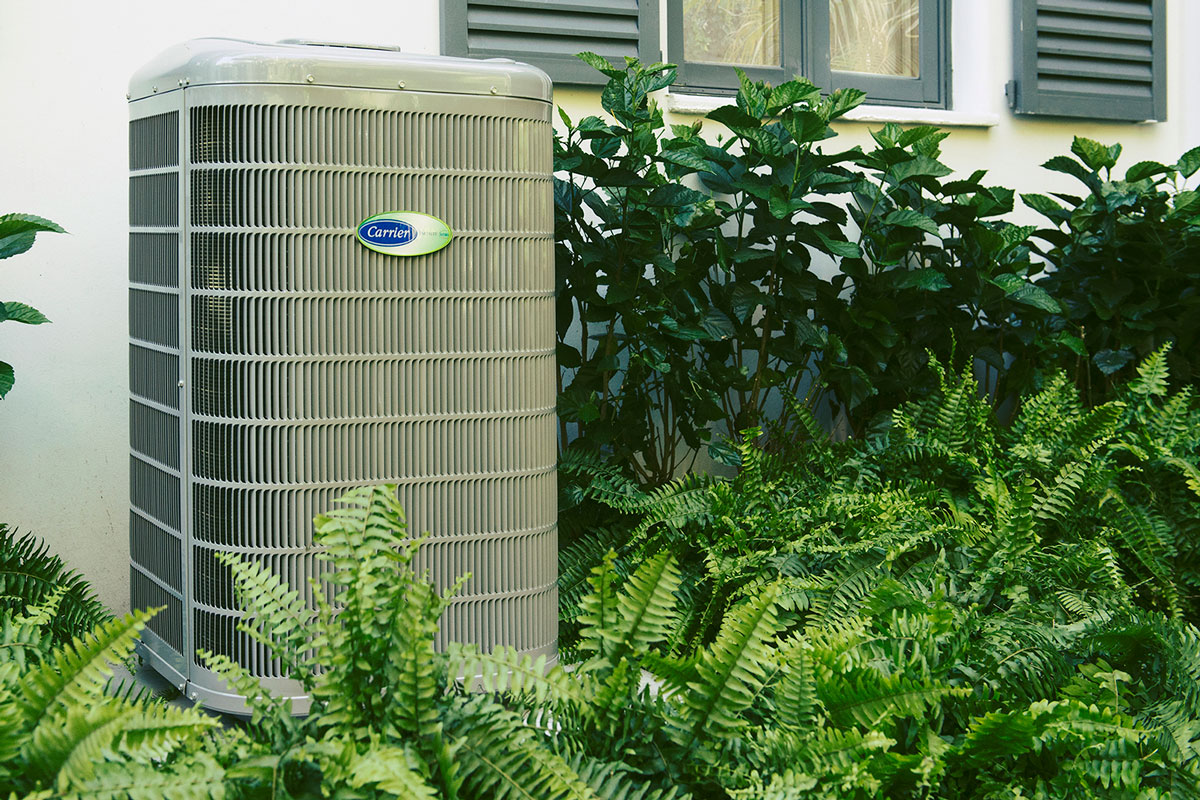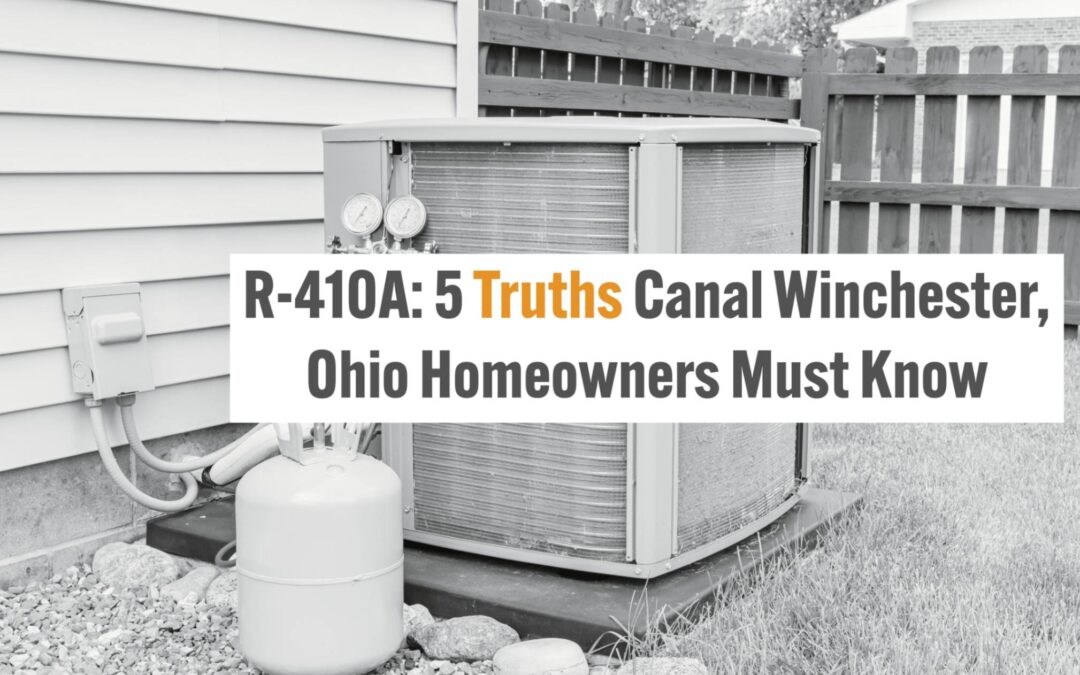Central air conditioners differ from brand to brand, but they all run on similar principles. Here in this short article, we will address how air conditioning works. We’ll also mention potential problems you may encounter with your AC system.
Included among the components that make up a typical Canal Winchester central air system is a condensing unit installed outside the home. The condensing unit contains the air conditioner condenser coils, the compressor, and the condenser fan motor.
Evaporator Coils
The evaporator coils (or cooling coils) are situated inside the home and are mounted atop a furnace or air handler. The furnace or air handler uses a circulation blower fan to draw air through the returned vent, blow it past the evaporator coils, and force the air through the home’s . The room air is then drawn back through the returns and the airflow cycle continues.
Once the room air has cooled sufficiently, the wall thermostat signals the circulation blower fan and condensing unit to switch off, until the room temperature rises.
This process can be broken down into three main processes or sections:
- temperature control
- cooling process
- air circulation
Temperature Control
The temperature in the home is managed by the wall thermostat, which is powered by the furnace control board (or by internal batteries). The thermostat must be installed in a central location in the home, located at eye level, and away from direct sunlight for proper temperature regulation. If the thermostat is influenced by sunlight from a window or cool air near a door or window, it could cause the rest of the home to be too warm or too cool.
Cooling
When the thermostat detects an increase in temperature, it closes the cooling circuit, allowing voltage to travel to the control board. The control board uses a time sequence to send 120 volts of alternating current to the circulation blower fan motor in the furnace, and 24 volts to the condensing unit contactor. It allows 240 volts to flow through a nearby disconnect box to the compressor and condenser fan motor when the condensing unit contactor is energized.
The disconnect box, which provides a way to turn off power to the condensing unit outdoors, includes a cartridge which may contain fuses. One common troubleshooting tip: if the compressor and condenser fan motor aren’t working, the disconnect box fuses are tested for continuity to determine if a continuous electrical path occurs. The disconnect box may contain a breaker instead of fuses, which can also be checked to determine if it’s tripped.
The compressor is a pump, compressing refrigerant in gas form into the condenser coils, where the gas is condensed into a hot liquid. The condenser coils dissipate the heat as the liquid travels through them, and a fan is used to assist the coils in this process.
Once the refrigerant has passed through the condenser coils, it travels to the evaporator coils located on the furnace or air handler. As the refrigerant liquid enters the coils, it expands into a gas, which makes the coils cold.
The humidity in the air condenses on the cold evaporator coils and drips down into a set of collection trays. The trays are attached to either a condensate pump or a floor drain.
It is vital to keep the condenser clean. If leaves or other debris congest the coils, the heat energy will not be dissipated properly and the system will not function efficiently. You can use a regular garden hose to clean the condenser by spraying the coils from the inside of the unit.
Air Circulation
Easily the most important factor in efficient operation of an air conditioner is is air flow. To ensure proper air flow, the air filter should be checked once a month, and replaced as needed. There are several types of filters that can be installed (paper, fiberglass), and range from one to five inches thick. The filter can be installed into the slot in the air return, or sometimes in an air cleaner. Some homes will have an electronic air filter installed which is powered by the furnace or air handler control board and eliminates the need for replacement (but it should still be cleaned from time to time).
When the circulation blower fan switches on, the blower fan motor can run at multiple speeds to improve efficiency. Lower speeds (750 CFM) are used when the furnace is heating and higher speeds (1220 CFM) are used for air conditioning.
If the circulation blower fan makes a squeaking noise while running, the set screw on the blower wheel may have loosened, causing the wheel to wobble on the motor shaft. You can fix this problem by tightening or replacing the screw, or replacing the blower wheel altogether.
Scheduled Maintenance: AC Tune-Up
We recommend having your AC system checked out annually to ensure maximum efficiency. We’ll see small problems before they become large ones, saving you cash and future headaches. Because your system will run more efficiently, an added bonus is you’ll save energy (and more money). Learn more about AC maintenance here.
Schedule routine maintenance for your home’s AC system (or if your system isn’t cooling as effectively as it should) by calling Canal Winchester’s best HVAC contractor by phone at (614) 524-4737 or you may schedule a visit online using our convenient appointment page.







